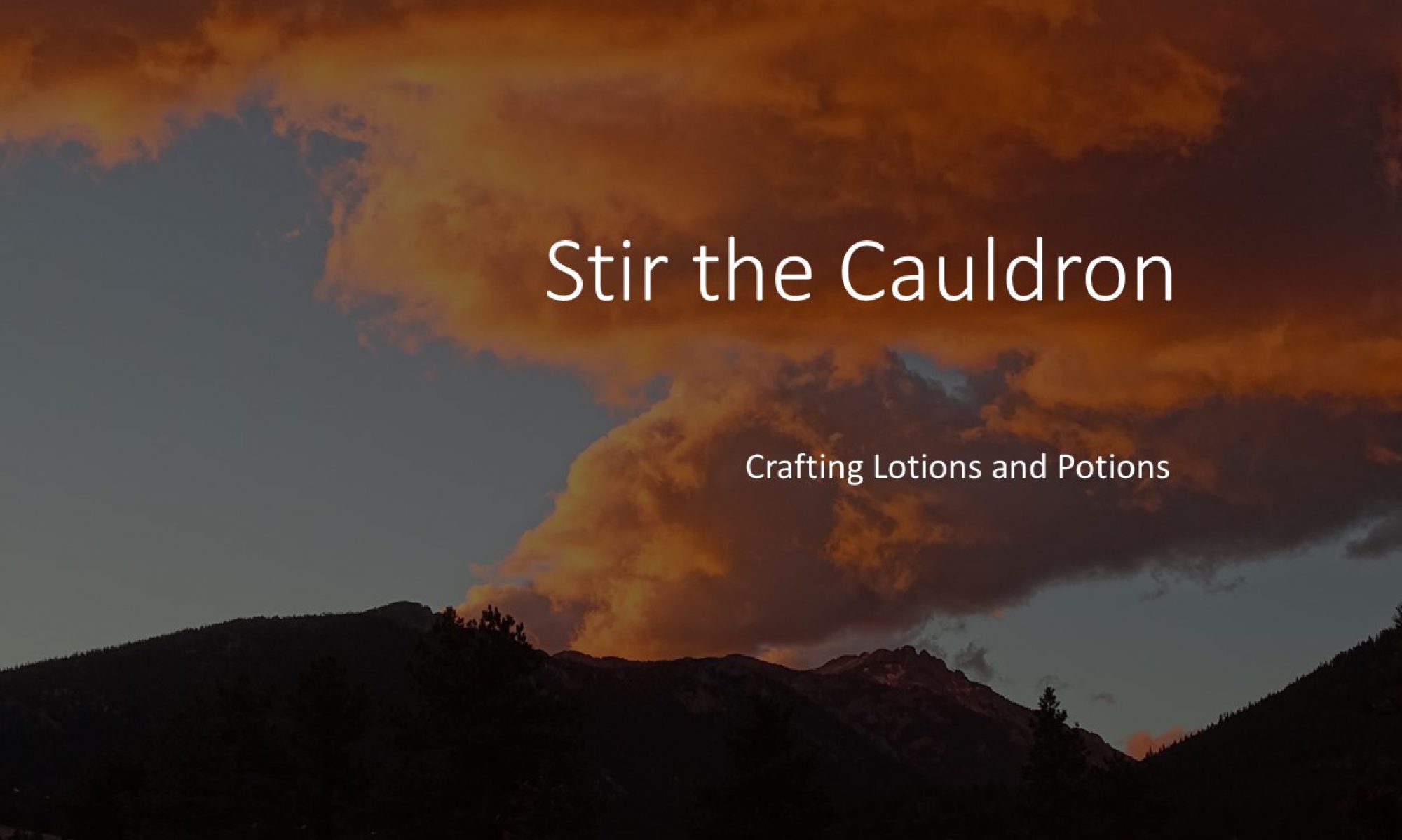
This recipe celebrates the Autumn Equinox, sometimes called Mabon. It also celebrates the festival of Harvest Home that falls on the full moon closest to the Autumn Equinox. This full moon is called the Harvest Moon and falls on 01 October in the Northern Hemisphere this year (2020).
The recipe uses essential oils to provide fragrance. The other ingredients have a scent which complements the essential oils.
Like Lammas Lotion, this is a lighter cream than the cold creams (#14, #21, #22). More than half the total ingredients are water based, so it cannot rely on beeswax alone as the emulsifier.
Also like Lammas Lotion, the higher water content in this recipe makes this cream more prone to fungal and bacterial contamination. The recipe is dosed with a natural preservative (Plantaserve E ) to reinforce the natural preservative action of the essential oils. I tend to package this lotion in smaller pots (10-15 ml rather than 50-60g) so the contents of a pot get used faster once it has been opened. If the contents of a pot do start to show signs of mould or fungal growth, then only a small quantity has to be thrown away.
When I use ingredients in very small quantities, say 1-5 ml, I use a syringe to measure them out. The syringes I use have blunt needles, and are sold for refilling inkjet printer cartridges.
This recipe makes about 250 g hand cream.
Equipment
In addition to the ingredients, you will need:
-
- A stick blender. (You can use a whisk at a pinch.)
- Metric scales capable of weighing to the nearest gramme.
- A container that you can use to put the stick blender in hot water to pre-heat it.
- 2 containers in which to heat and mix the ingredients. One container must be large enough to hold the full quantity; the other only has to hold the water phase ingredients. Although the container you will use for mixing has to be large enough to hold all the ingredients, the ingredients must fill it to a depth that will cover the blades of your stick blender. (I use two 500 ml Pyrex jugs. I know people who use Mason Jars successfully.)
- A pan large enough to hold your 2 containers (or 2 pans, one for each). Alternatively, you can heat the containers of ingredients in a low oven set to about 85C.
- Something you can use to stir the ingredients as you heat them up. A small plastic spatula that can cope with boiling water is ideal because you can use it to scrape out very last trace of your handcreme into jars.
- A thermometer is useful, but not essential.
- Glass jars or plastic pots to store your handcreme.

Ingredients:
Water Phase:
-
- 125 ml distilled water
- 50 ml Glycerine
- 10 g honey
Oil Phase:
-
- 9 ml Walnut Oil
- 9 ml Rosehip Seed Oil
- 9 ml Raspberry Seed Oil
- 15 g Shea Butter
- 10g Emulsifying wax (olive derived)
- 1.5 g Beeswax
Cool Down:
-
- 1 ml Plantaserve E
- 1 ml Vitamin E Oil
- 15 drops Cognac Essential Oil
- 5 drops Ambrette Seed (10%) Essential Oil
- 4 drops Clary Sage Essential Oil
- 4 drops Coriander Essential Oil
- 4 drops Labdanum Essential Oil
Method:
Preparation
Preheat the oven if you plan to use it to heat your ingredients. You will need to heat the ingredients to about 80C.
Measure the Oil Phase ingredients into the container you will use for mixing your hand cream.
Measure the Water Phase ingredients into the second container.
Put a stirrer in the oil phase container so it heats up with the ingredients. (If you put a cold stirrer into the warm oils they will solidify on the stirrer.)
Put both containers in the oven, if that is how you plan to heat your ingredients. Otherwise, put both containers into the pan, then put enough water in the pan to come up to the level of the ingredients. Heat the pan so the water slowly comes up to the boil, then turn the heat down so the water just simmers.
Put your stick blender in the container you are going to use to pre-heat it, and put the kettle on. Prepare your containers ready to pour in your creme when you have made it.
Mixing
Stir the oil phase occasionally until the wax and butter have melted. The emulsifying wax won’t melt completely, but at around 80C it will become very soft. Put hot water into the container with your blender to warm it up. Turn off the heat and take out the containers. When it has warmed up, put your blender in the container with the oil phase ingredients and run it as you add the water phase ingredients.
The mixture will thicken as it cools. Run the blender occasionally.
When the mixture gets to a little below 50C, or when you can comfortably hold the outside of the container, add the cool down ingredients and blend one last time. Disconnect the blender and scrape the cream that has stuck to it back into the container.
Tidying up
Pour or scrape your creme into the prepared jars or pots.
Put the lids on the jars or pots and then put them in a fridge until you are ready to use them. You might like to label the pots, including the date you made the contents.
Clean up with hot water and washing-up liquid.
